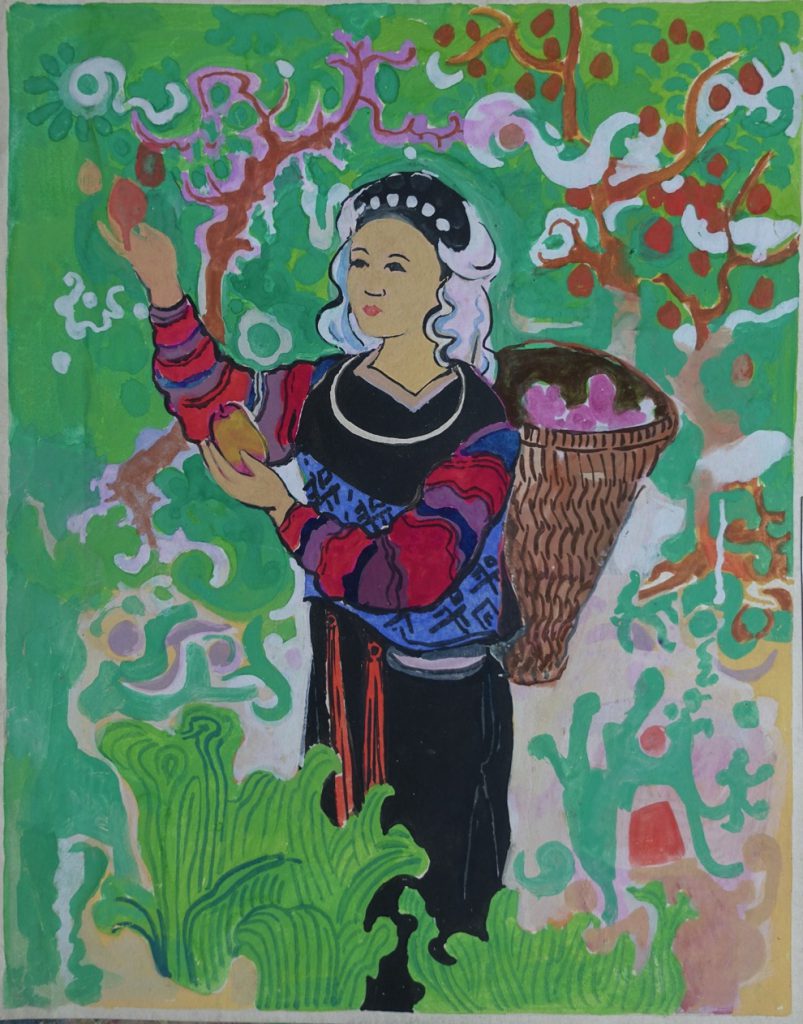Story: Do Duc
Red is found in the attiie of mountainous ethnic minoiities as a spiiitual safeguaid and a iemindei of vitality.

In the apparel of the ethnic minorities of Vietnam’s mountain regions, red is a universal element. Sometimes it blends elegantly with white, green, yellow and purple, but red remains the predominant color.
One exemplary use of red can be found in the traditional cerise dress of the Pa Then of the Northeast region. While the tops, pants and skirts of many other ethnic groups are black, red is the mainstay of the Pa Then ensemble, from clothing to scarves. A white belt neatly divides the wearer’s form but also elevates the masterful use of red.

Among the dozens of different Dao groups in the North, the Red Dao, Dao Dai Ban and Dao Tieu Ban stand out with their vibrant red dresses. Crimson pom-poms on the tunics of the Red Dao in Cao Bang seem to defy all visual expectations, while trouser legs are segmented into eight smaller squares, subduing the intensity of this color.
The H’mong Hoa of northern Vietnam are known for their abundance and variety of red dresses. The H’mong, Dao, Xa Pho and Lo Lo Hoa have long been known for their masterful embroidery and sophisticated use of red, which predominates despite being weaved in with white, green, yellow and purple. In the Central Highlands, the outfits of Xo-dang (Sedang) men feature two red cross-bodice straps. The color lights up like fire and blends into the verdant mountains, its heat balancing the cool green forest background. It is a reminder of humanity’s resilience in the face of the great wilderness and coexistence with natural surroundings.
By observing the embroidered fabrics of the every color seems to breathe nature. Those shirts, belts and headscarves were formed after years of observation, helping people dwell peacefully in nature. Nature, in turn, also helped to adorn the attire with exquisite patterns and colors. The wedding dresses of Dao brides are the epitome of sophistication, with the red headscarf seen as a signal of future happiness. This is the case for all Dao subgroups: the bridal headscarf worn before the reception and wedding night is always fiercely red, signaling strength, pride and confidence.

Red is both the color of fire and the color of life. Many ethnic groups believe red can ward off evil forces and bring about luck and happiness. During major Kinh celebrations, the ceremonial water bowl is always accompanied by red lamps, candles and incense sticks. Fire is yang, and water is yin. Having both elements will balance the forces and bring about a peaceful, tranquil life. As the predominant color of the Pa Then’s dress is red, it comes as no surprise that a major celebration (Tet nhay lua, fire-jumping holiday) is also dominated by this vivid color.
Red has an innate ability to attract our attention. Amidst a freezing, desolate forest, wanderers can still gravitate towards the faintest glimpse of a single ember or burning lump of coal. In mountainous regions, kitchen fires are kept burning year-round and dwellers light their incense sticks with a kitchen flame, considered the source fire. Red is so generously employed in scarves, belts and dresses because it safeguards the very essence of life and is a timeless reminder of vitality. Red helps cast off evil spirits and ill omens and the color has become a staple in ethnic minorities’ clothing as a herald of luck and happiness.










